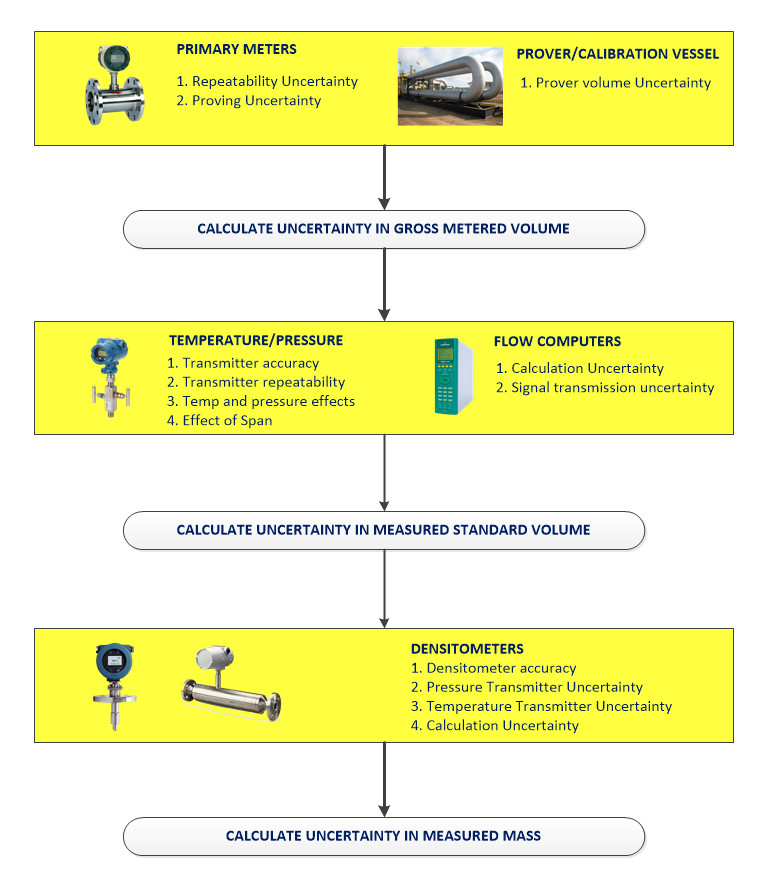SIMPLIFIED CRUDE OIL UNCERTAINTY CALCULATION

Measurement uncertainty is an offset from the real measured value, generally expressed as a percentage. Every piece of equipment in flow measurement system has got uncertainty figure associated with it, and is important to know how change or upgrade in measurement system would affect the overall uncertainty. Metering uncertainty serves as tool that shows how precise and reliable flow measurement is.
MIMO offers uncertainty calculation for most common types of metering systems found in oil & Gas industry. This involves all common types of meter like orifice, coriolis and ultrasonic meters. Most of the uncertainty calculations were developed on the basis of NFOGM studies.
Uncertainty allowances for various measurement systems will depends on its use and amount of product passing through. Tighter allowances apply to fiscal metering systems, due to financial implications and change of ownership of the measured product.
Fiscal Gas Measurements systems are used, where change of ownership takes place. System involves high pressure gas measurements using either orifice plate or Ultrasonic meters as primary flow measuring devices. Measurement skid must as a minimum consist of two streams, one duty and standby stream. Gas density is generally measured using either Gas Densitometers or using Gas Chromatograhy. All fiscal gas metering station entire combined uncertainty must be within 1 % of standard volume.
Fiscal Oil Metering systems are used, where chnage of ownership takes place. Liquid measurement is most commonly achieved usimg liquid turbine or ultrasomic flow meters. Liquid meter can be regularly checked against pipe provers or master meters. Oil density measurements will generally be via fast loop densitometers in dual redundancy mode. All fiscal oil metering station entire combined uncertainty must be within 0.25 % of standard volume.
Environmental metering is used for measuring fluids being discharged to environment. Most common environmental measurements are measurements of fuel gas, flare gas and produced water. Uncertainty tolerances for these systems are determined on case by case basis by environmental agency, and uncertainty is specified in the environmental permit. These systems are typically using Ultrasonic or Pressure differential meters like Orifice Plate, Venturi or v-cone. Environmetal metering usually consists of one active meter, and using a fixed value for fluid density.
Allocation meters are used for measuring phases coming out of field(s) that are owned jointly. Since no change of ownership takes place here, this types of metering systems can have higher uncertainty allowances, typically up to 4%. It is worth noting that allocation measurements can be designed to fiscal standard, but that largely depends on cost benefit ratio.